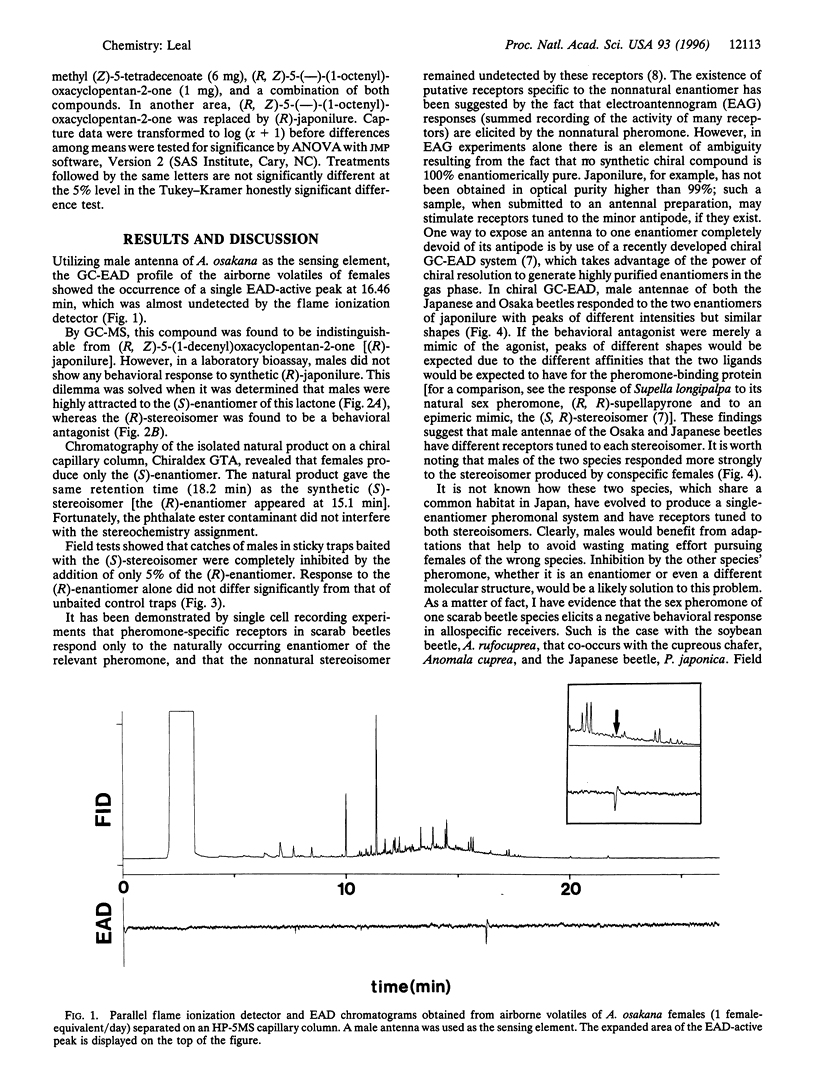Abstract
A novel mechanism of reciprocal behavioral agonist-antagonist activities of enantiomeric pheromones plays a pivotal role in overcoming the signal-to-noise problem derived from the use of a single-constituent pheromone system in scarab beetles. Female Anomala osakana produce (S, Z)-5-(+)-(1-decenyl)oxacyclopentan-2-one, which is highly attractive to males; the response is completely inhibited even by 5% of its antipode. These two enantiomers have reverse roles in the Popillia japonica sex pheromone system. Chiral GC-electroantennographic detector experiments suggest that A. osakana and P. japonica have both R and S receptors that are responsible for behavioral agonist and antagonist responses.
Full text
PDF



Selected References
These references are in PubMed. This may not be the complete list of references from this article.
- Apfelbach R. Erhöhung der Beutefang-Effektivität durch Librium. Naturwissenschaften. 1976 Dec;63(12):581–581. [PubMed] [Google Scholar]
- Leal W. S., Shi X., Liang D., Schal C., Meinwald J. Application of chiral gas chromatography with electroantennographic detection to the determination of the stereochemistry of a cockroach sex pheromone. Proc Natl Acad Sci U S A. 1995 Feb 14;92(4):1033–1037. doi: 10.1073/pnas.92.4.1033. [DOI] [PMC free article] [PubMed] [Google Scholar]
- Roelofs W. L. Chemistry of sex attraction. Proc Natl Acad Sci U S A. 1995 Jan 3;92(1):44–49. doi: 10.1073/pnas.92.1.44. [DOI] [PMC free article] [PubMed] [Google Scholar]
- Tumlinson J. H., Klein M. G., Doolittle R. E., Ladd T. L., Proveaux A. T. Identification of the female Japanese beetle sex pheromone: inhibition of male response by an enantiomer. Science. 1977 Aug 19;197(4305):789–792. doi: 10.1126/science.197.4305.789. [DOI] [PubMed] [Google Scholar]


